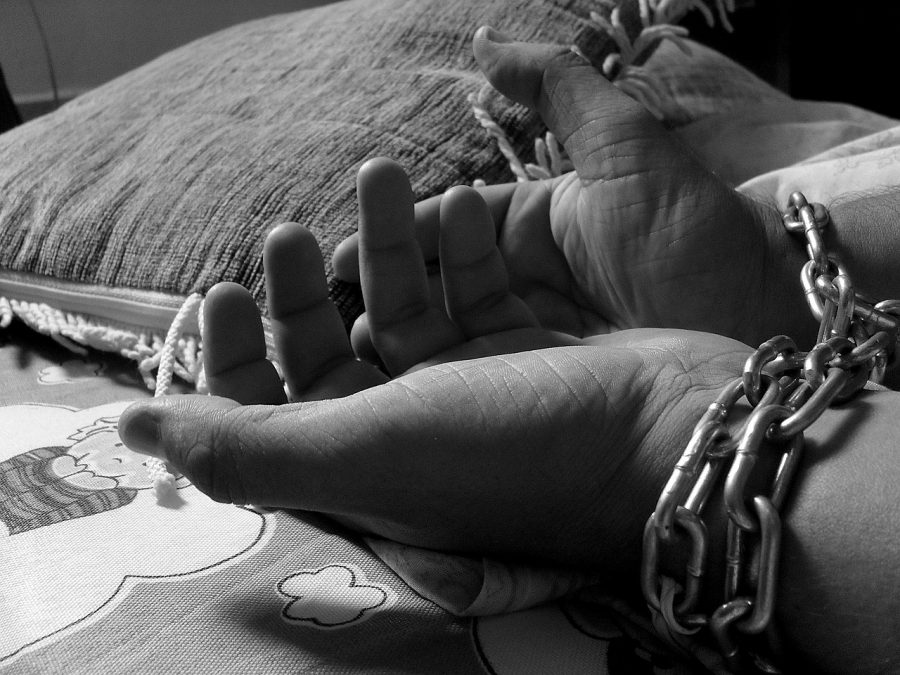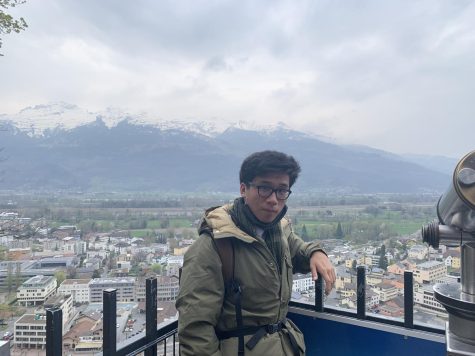Consider the following proposition: An industry that stretches across the globe, serving clients across international and geographical boundaries, and worth an estimated 32 billion dollars per year. Presented with such an idea, it would be logical to assume that it is some form of financial or technological industry. But the truth is that the industry described here is, in fact, the global human trafficking trade. The U.N. Protocol to Prevent, Suppress, and Punish Trafficking in Persons defines human trafficking thusly “Trafficking in Persons”… mean[s] the recruitment, transportation, transfer, harboring or receipt of persons, through the threat or use of force or other forms of coercion, of abduction, of fraud, of deception, of the abuse of power or a position of vulnerability or the giving or receiving of payments or benefits to achieve the consent of a person having control over another person, for exploitation. Exploitation shall include, at a minimum, the exploitation of the prostitution of others or other forms of sexual exploitation, forced labor or services, slavery or practices similar to slavery, servitude or the removal of organs.” (Article 3, paragraph (a)).The aforementioned 32 billion dollar net value is even more staggering when compared to the estimated 650 billion dollar net value of all illegal international trade in 2010–a full twenty percent. However, towering as these statistics are, they can not tell the whole story. The U.N.’s Global Report on Trafficking in Persons asserts in its opening paragraph that, “The term trafficking in persons can be misleading: it emphasizes the transaction aspects of a crime that is more accurately described as enslavement” (Global Report on Trafficking in Persons, 6). Across the world, tens of millions of humans, many of whom are women and children and hundreds of thousands in the United States alone, are forced against their will to engage in hazardous and or abusive labor. This crisis has only grown worse in recent times and will require a global response in turn to solve.
The trade in humans covers a global scale, predominantly in less developed countries within Africa, the Middle East, and parts of Asia and Eastern Europe. The type of work these modern slaves engage in also varies widely. The U.S. Department of Labor has identified 148 products from 75 countries made from forced and or child labor. Many more provide services such as selling sex. This latter form is especially prevalent in the United States, whether sold in person or online, and typically concentrated around major roadways and interstates. Consider the case of a woman named Kathy in Texas during her early college years. She fell into a relationship with the lead singer of a band in the area, which slowly morphed into him grooming her to be a part of a prostitution ring. His control over her started with having his name tattooed onto her body. Before she managed to get out, the following year was marked by severe physical, emotional, and sexual abuse.
The psychological trauma of her experience lasted much longer. It was a cycle reinforced and encouraged by her pimp during and afterward as a means of manipulation. Kathy’s experience follows many of the trends seen in the stories of women in similar situations. The exploiter being someone close to them, physical and emotional abuse used to control the victim’s emotions and identity, including tattoos as a sign of control. Once again, it would be amiss to present prostitution as the only form of human trafficking, nor would it be correct to suggest that the U.S. is the sole market. Consider also the story of a man named James Annan growing up in an impoverished family in Ghana. At the age of six, his family sold him off to perform fishing work in various villages. He endured grueling hours and hard work from 3:00 A.M to 8:00 P.M, with little food and healthcare and beatings from his boss if he attempted to protest. His life continued like this until he was 13. He managed to escape and eventually received an education and started a school for other kids at risk. His story mirrors that of a young boy in India named Ravi Shanker Kumar. He, too, was sold off by his impoverished family, in this case, to become one of many child laborers in India’s carpet industry. He was also subjected to long hours of toil at the carpet factory. He received little food and care for the numerous injuries sustained while working the loom and regular beatings whenever he slowed in his work. The stories of two women from Nepal named Seema and Kamala are similar in many of the same ways. They sought to get jobs abroad to escape poverty but were deceived and trafficked while trying to leave–in Kamala’s case, by her aunt. They suffered heinous abuse, inhumane work hours, and little to no pay abroad as domestic slaves. They faced difficulty reintegrating into society once they managed to escape and return home. These sorts of experiences repeat themselves over and over again in the stories of forced laborers, and not all are afforded the chance to escape that life as these individuals eventually managed to.
In a world fraught with such abuses of human rights, what is being done to correct these injustices? Amnesty International, one of the largest human rights advocacy groups, has performed research and published a policy in support of protecting the rights of sex workers and has also hosted an event in the past to raise awareness on human trafficking in general. As mentioned earlier, the U.N. has also released a Protocol to Prevent, Suppress, and Punish Trafficking in Persons (otherwise known as the Palermo Protocol). They lay out their guidelines to combat the industry, particularly concerning women and children. Besides these two major groups, many other nonprofits and organizations perform work on the ground, ranging from organizing authorities to freeing forced laborers from their owners and providing counseling and other services for freed workers afterward.
Even with the invaluable work performed by these organizations, there is still much left to be addressed in this battle. Human trafficking, particularly in the United States, has increased considerably in the wake of the COVID-19 pandemic. The current health crisis has left vulnerable people without jobs, potentially isolated with abusive individuals at home and potentially away from home due to travel restrictions. Many of them are cut off from social and legal services. It must be reiterated–this is a global battle against human trafficking, one that has only intensified in these times and will require the awareness and cooperation of all to succeed, including that of the reader. So what can you do to help combat human trafficking? Human trafficking is, by its illegal nature, a hidden industry, and there is no one way to spot it in plain sight. It is always vital to keep your eyes open for suspicious or unsettling behavior and patterns shown by people while out and about, such as excessive secrecy and controlling attitudes towards others. The old advice still applies–if you see something, say something, either to local authorities or the National Human Trafficking Hotline (1-888-373-7888).
To take a more proactive role, you can download the Traffickcam app for free on your smartphone and use it to take and anonymously upload pictures of hotel rooms you stay at during your travels. These photos are uploaded to an extensive database that authorities can access and locate traffickers and their victims. Pimps will often upload pictures of their offered prostitutes in hotel rooms they stay at to meet clients. These pictures can be cross-referenced with those on Traffickcam to deduce the hotel location, chain, and city. Most of all, however, spreading the word and awareness is the most significant contribution you can make. It may sound generic, but consider it as such–each person made aware of the crisis is another pair of eyes that can look for signs of trafficking. It is also another set of hands to make calls to report suspicious activity or contribute to databases like Traffickcam. Make an effort to get your elected representatives to take action and work to make others aware of this battle. Through the combined efforts of governments, organizations, and individuals alike, it is possible to prevent, suppress, punish and ultimately stop human trafficking.
Sources
- “Human Trafficking.” The Rape Crisis Center., https://rapecrisis.com/human-trafficking/. Accessed 21 April 2021.
- “Human Trafficking.” The Crisis Center. http://thecrisiscenter.org/get-informed/other-types-of-violence/human-trafficking/. Accessed 21 April 2021.
- “Global Report on Trafficking in Persons.” United Nations Office on Drugs and Crime. https://www.unodc.org/unodc/en/human-trafficking/global-report-on-trafficking-in-persons.html. Accessed 21 April 2021.
- Exchangeadmin.,“What can you do about the human trafficking crisis?”. Exchange Initiative. https://www.exchangeinitiative.com/what-can-you-do-about-the-human-trafficking-crisis/. Accessed 21 April 2021.
- Langford, Philip., “The Global Health Crisis and Human Trafficking Are Correlated- But How?”. Council on Foreign Relations, https://www.cfr.org/blog/global-health-crisis-and-human-trafficking-are-correlated-how. Accessed 21 April 2021.
- Broadbent, Sabrina, Walko, Bob. “Best Life: The crisis behind human trafficking.“ WMC5 Action News. https://www.wmcactionnews5.com/2021/01/29/best-life-crisis-behind-human-trafficking/. Accessed 21 April 2021.
- National Human Trafficking Hotline. https://humantraffickinghotline.org/. Accessed 21 April 2021.
- “Modern Slave Narratives.” End Slavery Now. http://www.endslaverynow.org/learn/modern-slave-narratives. Accessed 21 April 2021.
- ”ILO says forced labour generates annual profits of US$ 150 billion.” International Labour Organization. https://www.freehttps://www.ilo.org/global/about-the-ilo/newsroom/news/WCMS_243201/lang–en/index.htmtheslaves.net/our-model-for-freedom/survivor-stories/. Accessed 21 April 2021.


